I try to write my posts as unbiased as possible and recommend the products I consider to be useful and the best. I use affiliate links, this means that–at no extra cost to you–I can make a commission on a purchase you make after clicking on them. As an Amazon Associate I earn from qualifying purchases.
Puppy Clicker Training
for beginners
Puppy Clicker Training is a fun, easy and fast way to start your puppy's education. A clicker is a device that makes a "click" sound; we can teach your dog that "click" means treat! Then, we can teach her how to earn those clicks!
The first thing anyone must teach their dog is what trainers call a "marker word". This can be any sound, visual cue (for deaf dogs) or tactile cue (deaf and blind dogs). It can be taught to any dog, of any breed, age and background.
Puppies can start a training program as soon as you bring them home. Getting started with clicker training is a fun way to bond, play and teach your puppy all at the same time. It is very easy and any member of the family can participate, even kids!
Puppy clicker training is useful to teach your dog manners, cues (or commands), games, sports, beginner and advance behaviors and more! In this page I will teach you how to start training a puppy with a clicker and how to teach him a couple of basic manners: pay attention and ask for permission; two essential and easy to start behaviors.
Beginning clicker training
To start puppy clicker training the first thing you need to do is...
Charge the clicker!
No, it's not an electronic device but that's what we trainers call it when we teach a dog the meaning of the sound "click". Your puppy will learn that a click = treat.
Puppy clicker training tools you will need:
A clicker:You can buy a clicker at your nearest pet shop or order them online. In my opinion the best training clicker is the following one because they have a good sounds and are easy to handle. It comes with two attachment options (to your wrist or to your belt).  |
Puppy treats:You can use your puppy's kibble (this is my first choice for young puppies), make homemade treats or use anything healthy you have in your fridge (chicken, carrot pieces, etc.) - cut into pea size bites. You can also buy them, these are my favorites:  |
Intro to Puppy Clicker Training: Charge the clicker
- Click!
- Give your puppy a small treat.
- Repeat 5-10 times
- Change locations (different room in your house) and repeat 5-10 more times.
- Change situations (with other people present, in the yard, in the street) and repeat.
- Change your position (standing, sitting at the table, watching TV from the couch) and repeat.
- You will know your dog "knows" the click because her face will lighten up, tail will start to wag and she will look at you expecting a treat.
Simply click and give your dog a treat. Repeat….repeat…repeat in every room of your house, repeat no matter what your canine friend is doing…repeat until you see that your puppy's eyes light up at the sound of the clicker alone.
Once your dog understands that "click" means something good is going to happen, it is time to use puppy clicker training to your advantage. Whenever your dog does something good you can click to tell her so! and she will understand! This means that she will try to do the behavior again in order to get another click.
Clicker Training Schedule
How many times per day should you practice puppy clicker training? The answer to this question depends largely on the dog and owner. Some dogs, like border collies, are very active and like to work. In this case you could do longer sessions and more sessions per day. Other dogs get easily distracted or bored, in which case you may want to do shorter sessions. In general the following rules apply for any clicker training schedule:
- A good starting point is to do 3 to 5 clicker training sessions per day. But, if you are a busy person, getting just one session per day is better than nothing. If you will be training a working do, then start with a schedule that teaches the dog his/her future schedule too.
- Keep sessions short. Based on your experience with your own dog, try to always end a session before your dog walks away on you. The idea is to leave him wanting more!
- The number of repetitions per session is variable depending on the dog and the task you are training. Like I say, usually less is more!
- Take breaks between sets of repetitions and play or rest with your dog. For example, lets say you usually do 30 repetitions per session, take a break every 10 repetitions and play with your puppy (throw a ball, play tug, chase, etc.) ore rest (petting, walking around, etc.). These are short breaks 1 to 2 minutes only.
- At the end of each session take a longer break and play with your dog. A research study suggest that a play session after your are done enhances your dog's learning. It is also recommended that your puppy sleeps in between sessions to consolidate what has been learned.
Charging the Clicker Tips:
- The clicker is not a remote control, you don't need to point it at your dog.
- The order of events is THE MOST IMPORTANT part of this exercise: First comes the click and THEN comes the treat. Pay attention and make sure you are not touching the food or moving your hand towards the treats before the click. First click, then grab the food and give it your puppy.
- During this exercise your dog DOESN'T need to do anything, he does NOT need to sit, look at you, come or anything else. We are just trying to teach the association that click = treat. This is called classical conditioning. If your dog is distracted, you can click and treat, if your dog is looking at you, you can click and treat, if your dog is NOT looking at you, you can click and treat...you get the idea, right?
- Even though your dog does not need to do anything to earn the click and treat yet, try not to practice charging the clicker when your puppy is doing something you don't like. For example: jumping, biting, barking, etc.
- Keep the clicker somewhere your dog can't get it when it's not in use.
- Don't use the clicker to call your dog's attention! The clicker is a sound meant to "mark" when your dog did something good. Next we will learn how to use puppy clicker training to teach your dog to pay attention to you.
- All these rules apply to all your training sessions, no matter what it is your are teaching your dog.
Puppy Clicker Training: Attention
Now that your puppy knows the meaning of the clicker, you can use puppy clicker training to teach her to pay attention to you, a very useful skill. The idea is to teach your puppy: 1) To always pay attention to you, even when she is distracted, to look at you every once in a while. 2) To look at you if she needs or wants anything (permission).
Attention is not technically a command, instead it is something we want your dog to do on her own. It's very easy to teach and will make the rest of her training easier, because now you have a dog that loves looking at you!
This exercise is almost as easy as charging the clicker, the difference is that, in this case, we do want your puppy to do something to earn her click and treat. All she has to do is look at you!
Puppy Clicker Training to Pay Attention to You:
- Have a few treats ready in your hand (10 pieces at least) and the clicker ready.
- Start by practicing "charging the clicker" with the first 3-5 treats. This means that for the first 3-5 click-treats your dog DOES NOT need to look at you. This will get your puppy into the game. Just click and treat!
- Now it's very likely that your puppy looks at you, so Click! and treat only when she looks at you from now on. Do this with the rest of the treats you have in your hand.
- Take a 60 second break, play with your puppy or rub his belly, grab 10 more treats and repeat step 3.
- If your puppy keeps looking at you, you can wait a few seconds click and treat again. This is actually good, we want to teach a puppy to hold her attention on you.
- Take another break, and grab 10 more treats.
- Now, instead of giving your puppy a treat directly into her mouth, toss the treat a little further away. This will make you puppy get up and move (and break eye contact).
- Wait until you puppy looks back at you again. This may take a just a few seconds or many many seconds depending on your puppy's attention span. This is OK, we are teaching her to lengthen that attention.
- Repeat steps 7 and 8 a few times before ending the session.
- Play with your dog at the end of the session and the take a long break (hours).
- After a few sessions, you should have a puppy that goes to grab the treat but comes right back to you and looks at you. So, make sure you toss the treat far or close, to the right or the left, etc. Mix it all up!
- Repeat all steps in different locations or situations (different rooms in your house, during walks, at the park, with people visiting at your house, etc.).
Tips to teach your puppy to pay attention to you:
- You may want to hide the hand with the treats behind your back, otherwise it's very likely that your puppy will look at your hand instead of your face.
- Pay attention to your timing. You are actually using the clicker to "MARK" a behavior. So AS SOON AS you puppy looks at you, click! and only AFTER the click you move your hand to give her a treat. The order of events is still very important.
Puppy Clicker Training for Permission
Attention can take many forms. Another excellent exercise to start working with your puppy is to teach her to look at you if she wants anything. This will strengthen the bond between the two of you because it will teach her to trust you.
- Pay attention to all the things that you give your puppy, either because your puppy wants it or needs it. Examples are: food, water, putting on the leash, letting her say high to a person in the street, tossing a toy or playing with her, giving her a belly rub, letting her go out the door to the backyard, etc.
- Keep a bowl of treats and the clicker ready around the house.
- Every time your puppy wants or needs anything, wait for her to make eye contact with you, then click and, instead of a treat, give her what she needs or wants.
- This can be done at home, at the park, during walks, when people come visit, etc.
Do you need to use the clicker forever?
Puppy clicker training is not forever. The clicker is mostly used to teach the dog something new, but eventually you want to replace the clicker for a word (that way if you don't have the clicker near by you can still "mark and reward" your puppy).
I use the clicker when I want to teach my dog something new and complex. Most basic commands can be taught with a word and you don't necessarily need a clicker. But it's good to start teaching your puppy with a clicker so she gets used to it and learns its meaning.
Switching to a marker word is very easy, just follow the same steps you did to "charge the clicker"....but now you will be charging a word! Then you can use the word as a marker to keep rewarding your puppy once in a while. Because even though you can stop using a clicker, you need to keep rewarding your dog once in a while to get reliable behaviors and commands.
More Free Puppy Training Tutorials:
|
|
Potty training: Training your puppy to eliminate outside can be the biggest nightmare if you do it incorrectly. If you follow the advice here you could have your doggy housetrained in about a week. Using puppy clicker training will further help you achieve success in this matter. | |
|
|
Socialization:
This is probably the single most important thing you should work with your new puppy and it is often the most overlooked. Your job is to expose your puppy to more than 100 new
things before the age of 3 months. And the key to success: all these things have to be associated with something good! | |
|
|
No-biting: This is probably the second most important thing you should teach your puppy dog. During this time in development dogs also learn how to use their mouth properly. This means that dogs can learn to play with their mouth gently, without using their teeth. Why is this so important?... | |
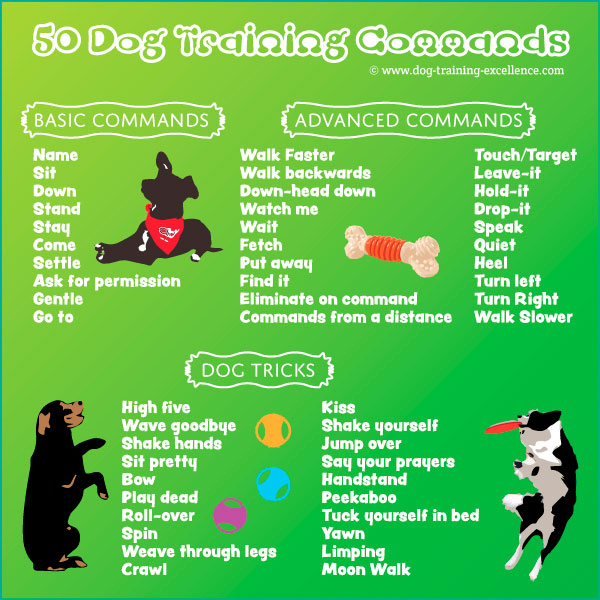 |
Want to teach you puppy more things? Here is a list of dog training commands to keep you and your dog busy! |
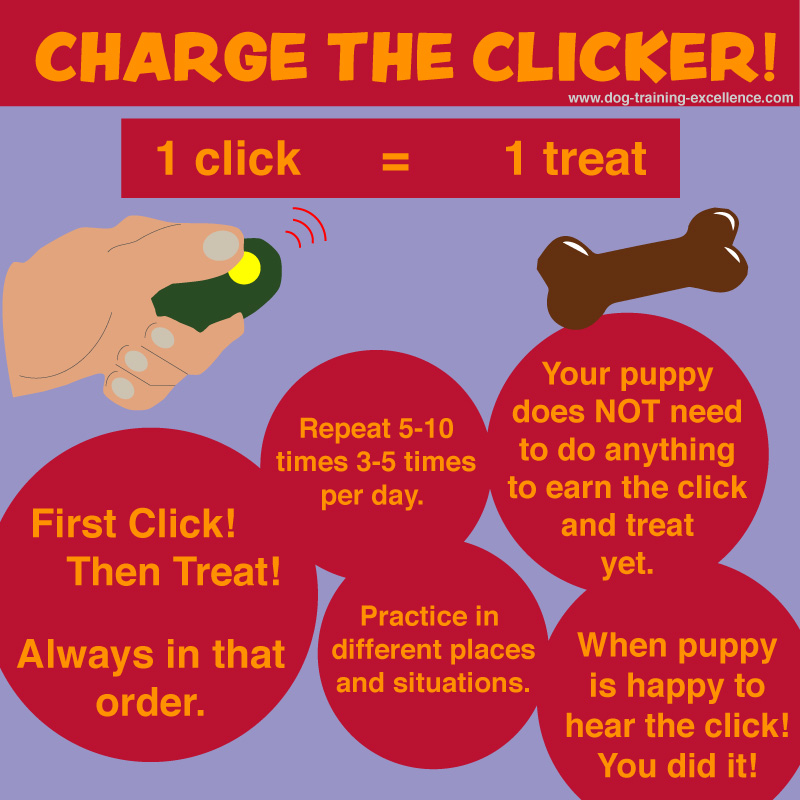
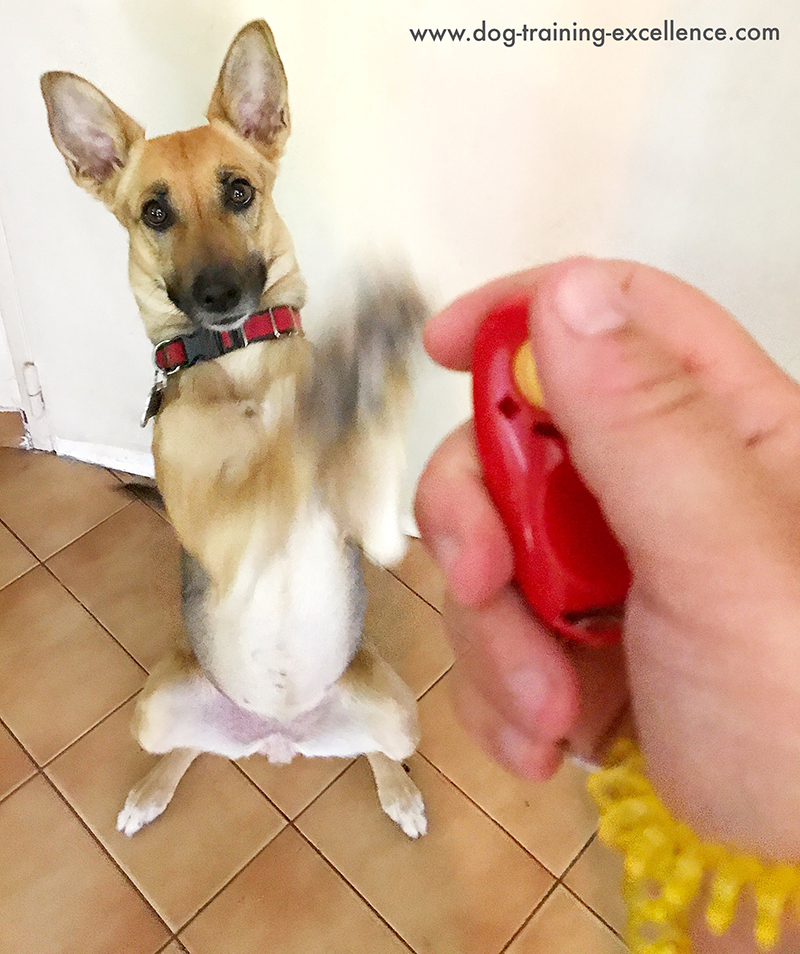
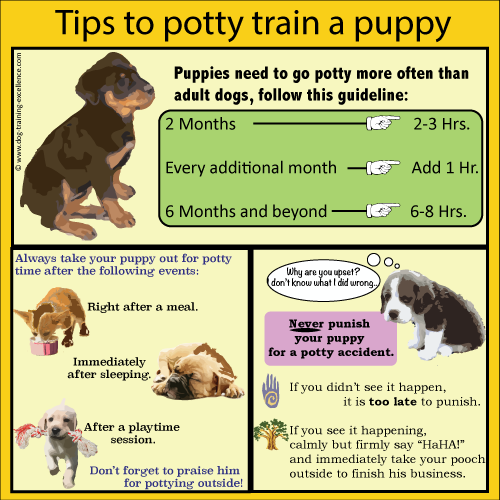
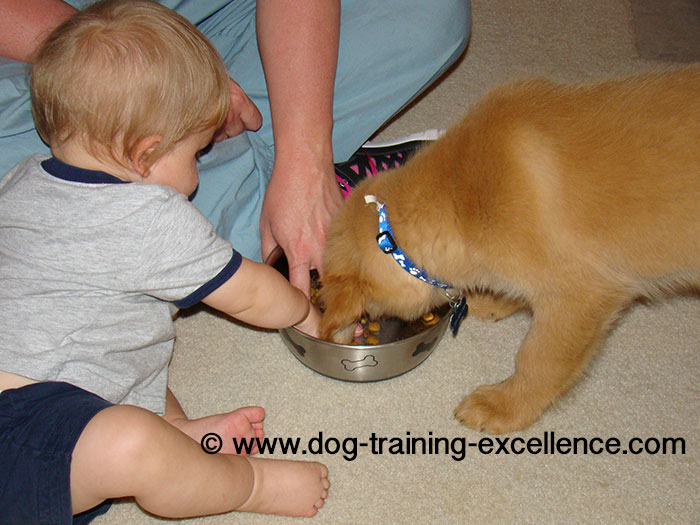
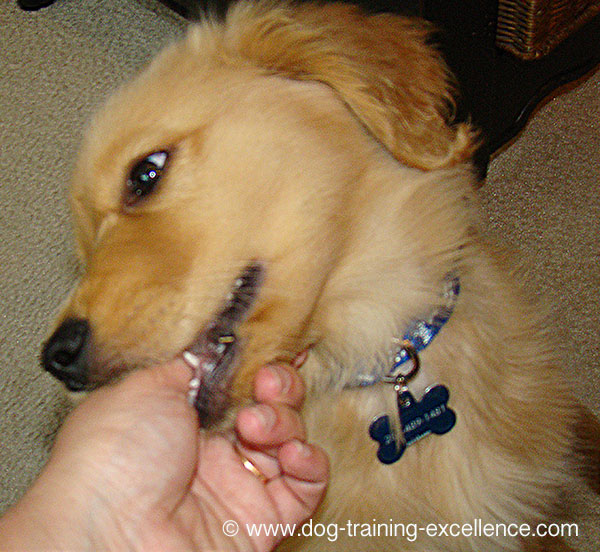

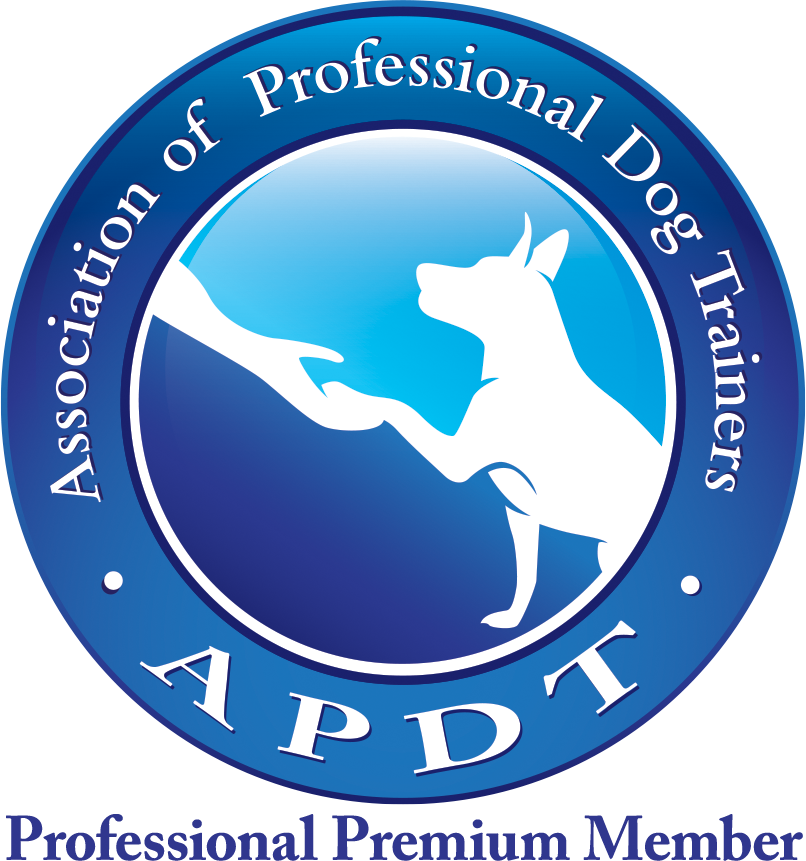


New! Comments
Questions? Anecdotes? Tips? Leave me a comment in the box below.